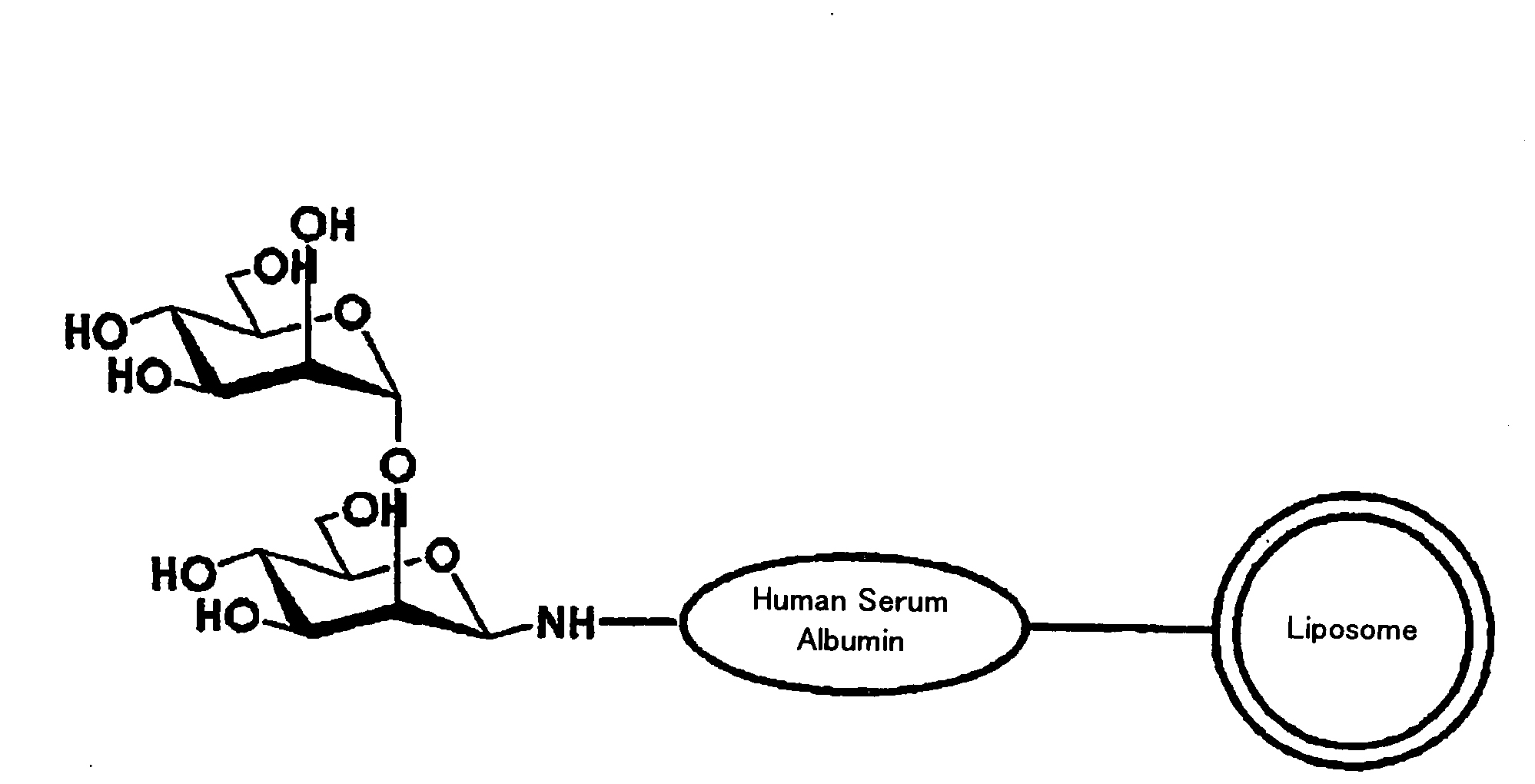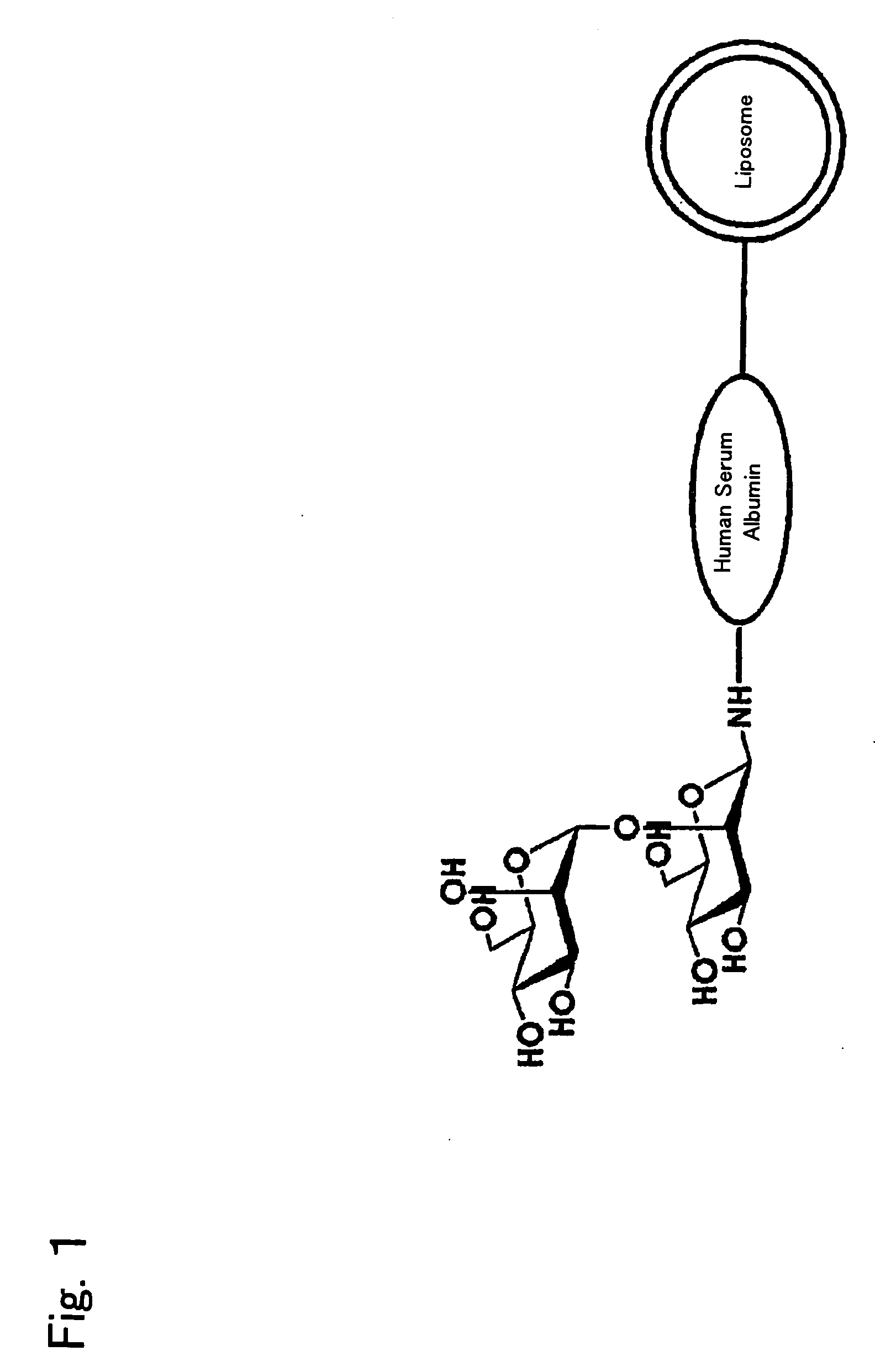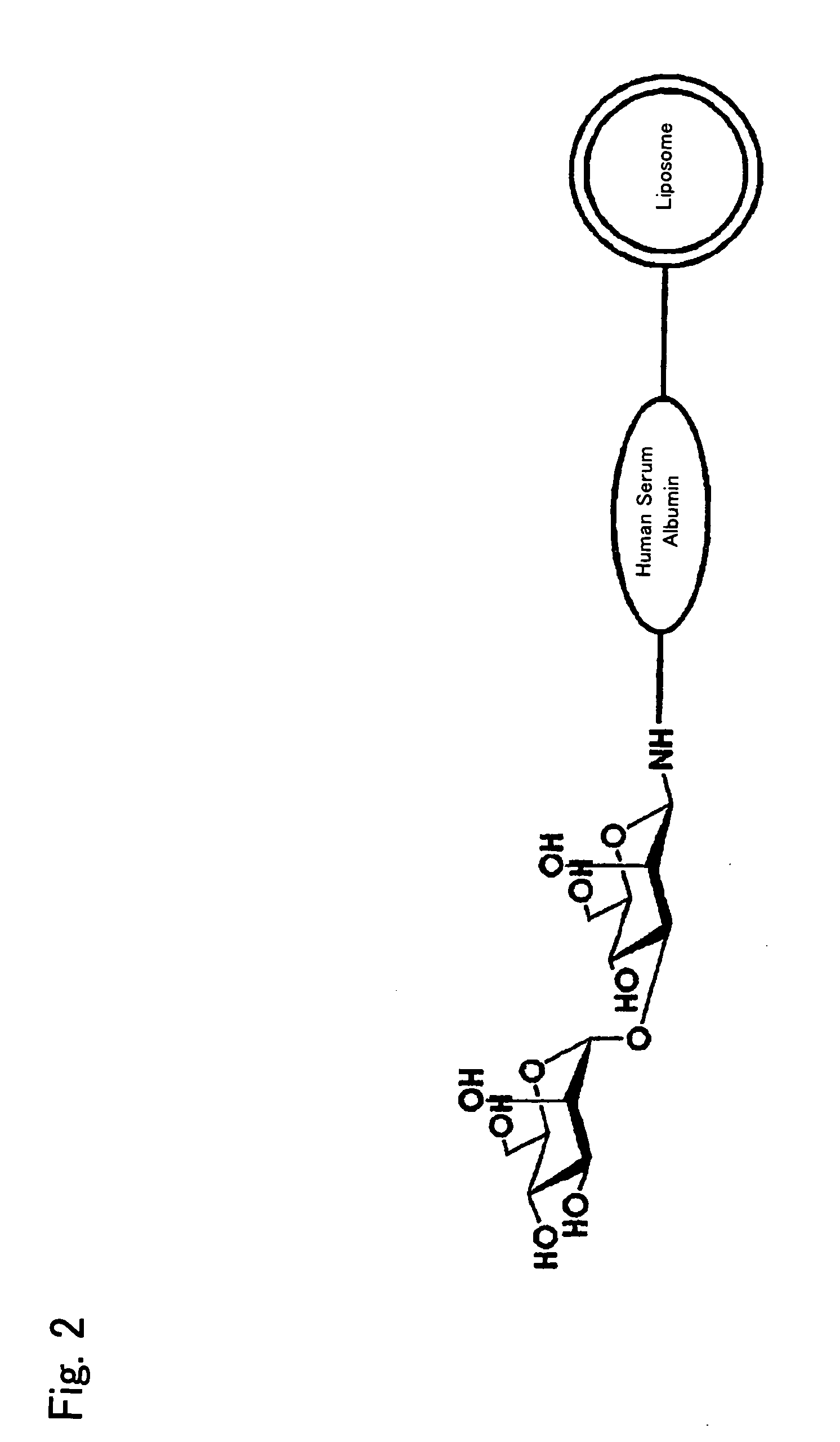Liposome Preparation
a technology of liposomes and preparations, applied in the field of liposomes, can solve the problems of insufficient use of methods, inability to meet the needs, and inability to meet the side effects of drug products, so as to achieve efficient suppression of cancer growth, increase the concentration of drugs at the site of diseases, and high targetability
- Summary
- Abstract
- Description
- Claims
- Application Information
AI Technical Summary
Benefits of technology
Problems solved by technology
Method used
Image
Examples
reference example 1
Preparation of Liposomes
[0120]Liposomes were prepared by a previously published technique (Yamazaki, N., Kodama, M. and Gabius, H. J. (1994): Methods Enzymol. 242, 56-65) and using modified cholic acid dialysis. That is, 46.9 mg of sodium cholate was added to a combined amount of 45.6 mg of lipids consisting of dipalmitoylphosphatidylcholine, cholesterol, dicetyl phosphate, ganglioside and dipalmitoylphosphatidylethanolamine in the proportions 35:40:5:15:5, and the mixture was dissolved in 3 ml of a chloroform / methanol solution. This solution was evaporated and the precipitate was dried in a vacuum, thereby giving a lipid membrane. The lipid membrane thus obtained was suspended in 3 ml of TAPS buffer (pH 8.4) and sonicated, giving a clear micelle suspension. In addition, the micelle suspension was subjected to ultrafiltration using a PM10 membrane (Amicon Co., USA) and a PBS buffer (pH 7.2), thereby preparing 10 ml of uniform liposomes (average particle size, 100 nm).
reference example 2
Hydrophilizing Treatment on Surface of Liposome Lipid Membrane
[0121]Ten milliliters of the liposome solution prepared in Reference Example 1 was subjected to ultrafiltration using an XM300 membrane (Amicon Co., USA) and a CBS buffer (pH 8.5), thereby setting the solution pH to 8.5. Next, ten milliliters of the crosslinking reagent bis(sulfosuccinimidyl) suberate (BS3; Pierce Co., USA) was added and the mixture was stirred at 25° C. for 2 hours. This was followed by overnight stirring at 7° C., bringing to completion the chemical bonding reaction between the lipid dipalmitoylphosphatidylethanolamine on the liposome membrane and BS3. This liposome solution was then subjected to ultrafiltration using the XM300 membrane and the CBS buffer (pH 8.5). Next, 40 mg of tris(hydroxymethyl)aminomethane dissolved in CBS buffer (pH 8.5) was added to 10 ml of the liposome solution, and the mixture was stirred at 25° C. for two hours, then stirred overnight at 7° C., thereby bringing the chemical b...
reference example 3
Coupling of Human Serum Albumin (HSA) to Liposome Membrane Surface
[0122]Coupling was carried out using a coupling reaction in accordance with a previously published technique (Yamazaki, N., Kodama, M. and Gabius, H. J. (1994): Methods Enzymol. 242, 56-65). This reaction was carried out as a two-stage chemical reaction. First, the ganglioside present on the membrane surface of 10 ml of liposomes obtained in Reference Example 2 was added to 43 mg of sodium metaperiodate dissolved in 1 ml of TAPS buffer (pH 8.4), and the mixture was stirred at room temperature for 2 hours to oxidize the periodic acid, following which ultrafiltration using a XM300 membrane and PBS buffer (pH 8.0) was carried out, yielding 10 ml of oxidized liposomes. Twenty milligrams of human serum albumin (HSA) was added to this liposome solution and the mixture was stirred at 25° C. for 2 hours, following which 100 μl of 2M NaBH3CN in PBS (pH 8.0) was added and the mixture was stirred overnight at 10° C., thereby att...
PUM
| Property | Measurement | Unit |
|---|---|---|
| particle size | aaaaa | aaaaa |
| particle size | aaaaa | aaaaa |
| molar ratio | aaaaa | aaaaa |
Abstract
Description
Claims
Application Information
 Login to View More
Login to View More - R&D
- Intellectual Property
- Life Sciences
- Materials
- Tech Scout
- Unparalleled Data Quality
- Higher Quality Content
- 60% Fewer Hallucinations
Browse by: Latest US Patents, China's latest patents, Technical Efficacy Thesaurus, Application Domain, Technology Topic, Popular Technical Reports.
© 2025 PatSnap. All rights reserved.Legal|Privacy policy|Modern Slavery Act Transparency Statement|Sitemap|About US| Contact US: help@patsnap.com



